Since my retirement at age 48, I have loved cooking, but now that we are here in Spain, it has become one of the supreme joys of my life. The Basque Country in northern Spain is celebrated worldwide for its haute cuisine. The combination of Spanish zest and French elegance is evident in every bite. Whether savoring pintxos in a bustling bar or enjoying Michelin-starred dining like we did in San Sebastian this past September, each experience highlights the area’s rich cultural tapestry. But the real foodie experience comes from the traditional dishes locals have made for centuries.
For a Christmas gift, Gina and I gave each other a day to learn traditional Basque cooking. We arrived at 10 a.m. sharp yesterday, and Marco, our master chef, and Josep, the owner of Cook&Taste Private Cooking Experiences, met us at the door of their stunning cooking facility. The building is 300 years old and is in the epicenter of the Gothic Quarter of Old Town (Cuitat Vella).
The first order of business was to create a menu for the day. I had previously emailed them that I did not want to do the “touristy” items such as paella and croquettes. I wanted to learn about traditional dishes from the Basque Country or Galicia. We soon learned that Marco and his family are from Basque Country, and he was delighted not to be required to do the same ‘ole touristy dishes. We instantly bonded with him; he speaks excellent English, and the day proceeded in a combination of Spanglish, with each of us teaching the other phrases in our respective languages. What fun!
We then walked through the centuries-old medieval streets of Cuitat Vella to (arguably) the best fresh market in the world: Mercat de la Boqueria. Marco knew everyone. He taught us how to choose the freshest vegetables, seafood, bread, pork, and olives at his favorite stalls. It was an education. We spent over two glorious hours shopping there. He later told us he had never spent that much time shopping for his class, but he did not want to hurry because we were having so much fun.
The menu in the photo gallery below is in Spanish. It includes several of his grandmother’s recipes, which he modified over the years. He completed three years of culinary institute training here in Barcelona and has been cooking as a master chef for the past thirteen years. He has also been in the food and hospitality business for over thirty years. He instantly put us at ease and masterfully guided the day.
We learned we would be preparing a few tapas (appetizers), two primer platos (first course), a segundo plato (second course), and a postre (dessert). We then chose the menu together. After a few iterations, our meal was:
Local Spanish wine for the day: Reforjat Crianza Blanca (White) and Indispensable (Red)
Tapas: Assorted fresh local olives, freshly made bread, fresh sliced Black label Ibericio Riserva Jamon, and a savory pâte à choux (puff pastry) topped with minced fresh bacon and grated fresh Idiazabal (a traditional cheese made solely from raw sheep’s milk manufactured in the Basque Country. It is a semi-hard cheese with a light brown rind and smooth texture). And my favorite: Bocartes en cazuela, a traditional Spanish dish originating from the Basque Country. The dish is made with a combination of very fresh anchovies, garlic, red pepper flakes, olive oil, salt, and red wine vinegar. The anchovies are rinsed, cleaned, sprinkled with salt and red pepper flakes, and then fried in olive oil with minced garlic.
Primer Platos: 1) Fresh pulled Baccalà (salted cod) with a mirepoix. That is, diced Spanish green and red peppers, carrots, sliced garlic, and a soft pinkish onion from Figueras, a city just to our north. The onion is like a big shallot. All of it is sauteed in olive oil on low heat for about 20-30 minutes.
2) Large fresh prawns with fresh-cut bacon on a skewer were pan-seared with olive oil and topped with diced red and green pepper, carrot, and garlic in olive oil. This was served Pintxos style on a fresh slice of baguette bread. This was one of our favorite dishes of the day. We agreed it was the best shrimp of our lives!
Segundo Plato: Fresh fileted skin-on Merluza (Hake) pan-seared with minced garlic, olive oil, and fresh parsley, with fresh almejas (clams). The fish was like butter, and the skin added a gelatin-like addition to the dish (gelatin is a huge deal in Basque cooking), and the clams here are like no other on earth. Delicious.
Postre: The versatile pâte à choux is now served as dessert—filled with whipped cream and covered in ganache chocolate. Oh my!
Interesting Things We Learned
- There are over 300 types of cheeses in Spain (take that, France!)
- Put olive oil and minced garlic in a cold skillet and add slow heat to keep the garlic from burning. Yes!
- Turbio is an unfiltered Basque white wine that tastes like cider. It can be bought at Sorle supermarket for less than 2 euros.
- Igueldo: A great wine named after the mountain in San Sebastian that towers over the La Concha beach.
- Splurge on Primera Extra Virgin Olive Oil (First Press), and in every village in Spain we go to, be sure to buy the local extra virgin olive oil.
- Cockles are called Berberechos in Spain and are fantastic when stored in tins (cans.)
- Catalan Cannelloni With Truffle Cream with Fois Gras is a Dec. 26 Spanish tradition. (Sign me up!)
- Jamon (ham) is labeled black, red, and white. Black pork is from the Portuguese border (Iberico 100%). It is hung up to dry for five years. Black and red labels mean the pigs were only fed acorns for the last two months. White label—raised in Granada—is called jamon serrano, and the female is better—more tasty. (Of course!)
- One of our favorite nearby stores, Cortes Ingles, has a fantastic gourmet section. Who knew? My “school assignment” for Monday is to check it out and try not to break the bank.
- Butifara is raw sausage. There are four types: white (salt & pepper), red (paprika), yellow (egg), and, of course, the infamous blood sausage. Another assignment: Ask my butcher Jesus his favorite butifara.
- Magical pairing: White wine, membrillo (sweet quince paste), walnuts, and Idiazabal cheese.
- Pulpo a feira: Galicia’s traditional dish of boiled octopus and potatoes.
- Salted Cod (Baccalà): store it 24 hours in frig – skin up -change water every 8 hours – if it is a thick filet (1.5-3 inches), then store for 3 or 4 days. This diluted the salt it was packed in.
- The best place to buy Fois Gras is AbiNova, next to La Boqueria.
- Merluza (Hake): The eyes should be shining, not red. Get the filets from the tail area with skin on, not the stomach (worms).
- Sepia (Cuttlefish): Buy it dark, not whitish.
- Fois Gras is astounding with Royal Tokaji Dessert Wine from Hungary or French Sauternes.
- Penjats -hanging tomatoes-traditional tomatoes for Catalan bread.
- Montsans -another great wine region to research.
- Huevos (Eggs) – are numbered – ES for Españya FR for France. Look at the first number and buy 0-1 for best quality and 2 if you are cooking with it.
- Cava vinegar – Delicious to cook with. Use it like apple cider, red, or white vinegar.
- Artichokes (Alcachofas)- perfect pairing with foie gras, clams, and serrano ham.
- Guerande -Amazing salt from France.
- To keep your fingers from smelling like garlic after mincing, do not rub your fingers together; place them under cool running water, do not rub, and voila! No smell!
The cooking class lasted six hours, yet it seemed like seconds. It was one of the most enjoyable days of my life. I learned so much about Spanish culture, history, and cuisine, including Basque cuisine and culture, great cooking techniques, and how to prepare delicious new traditional Spanish dishes. And we have a new friend, Marco. What a day! Perfect! ¡Me encanta España!
Click top-right of photo to enlarge.


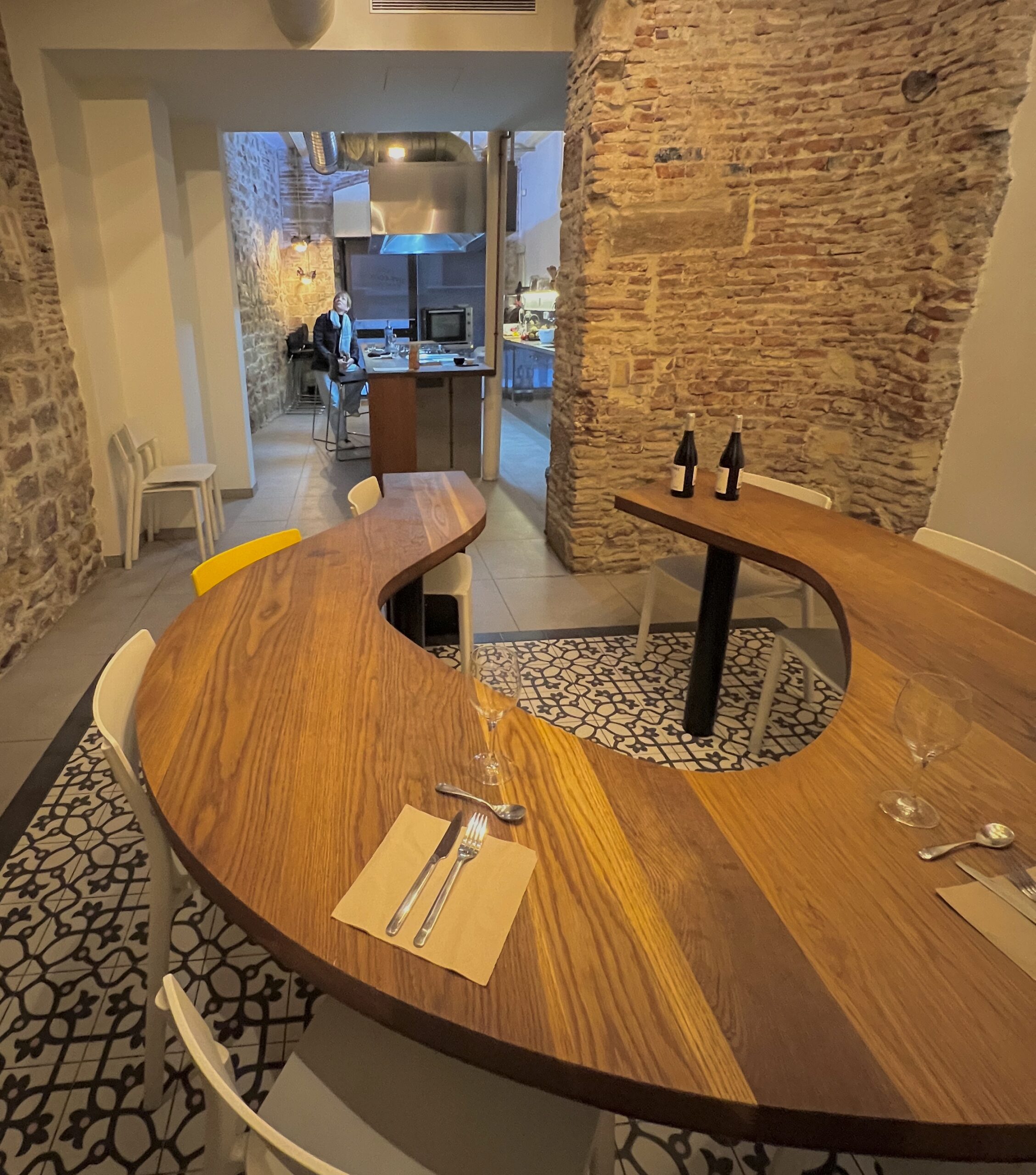

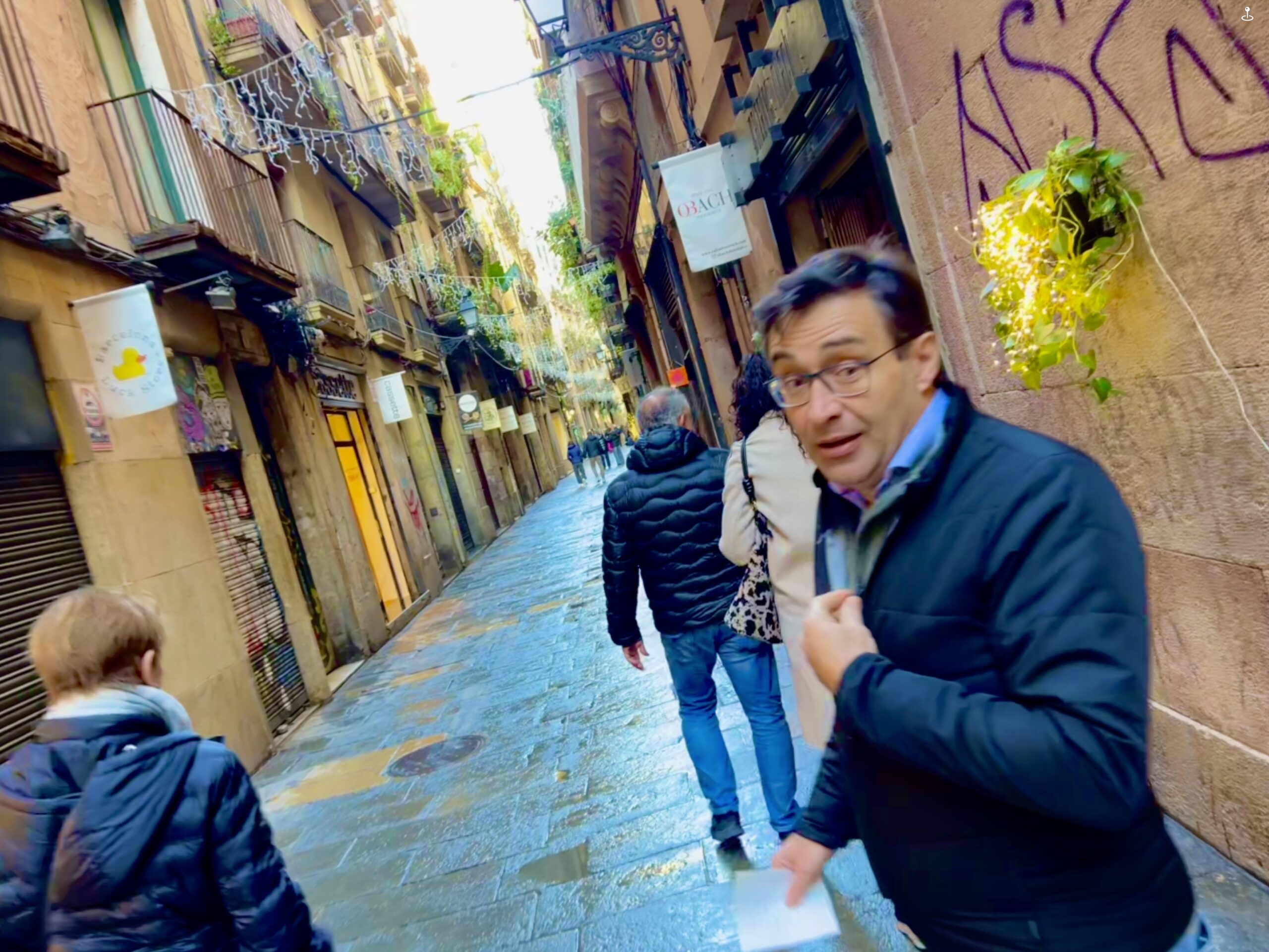
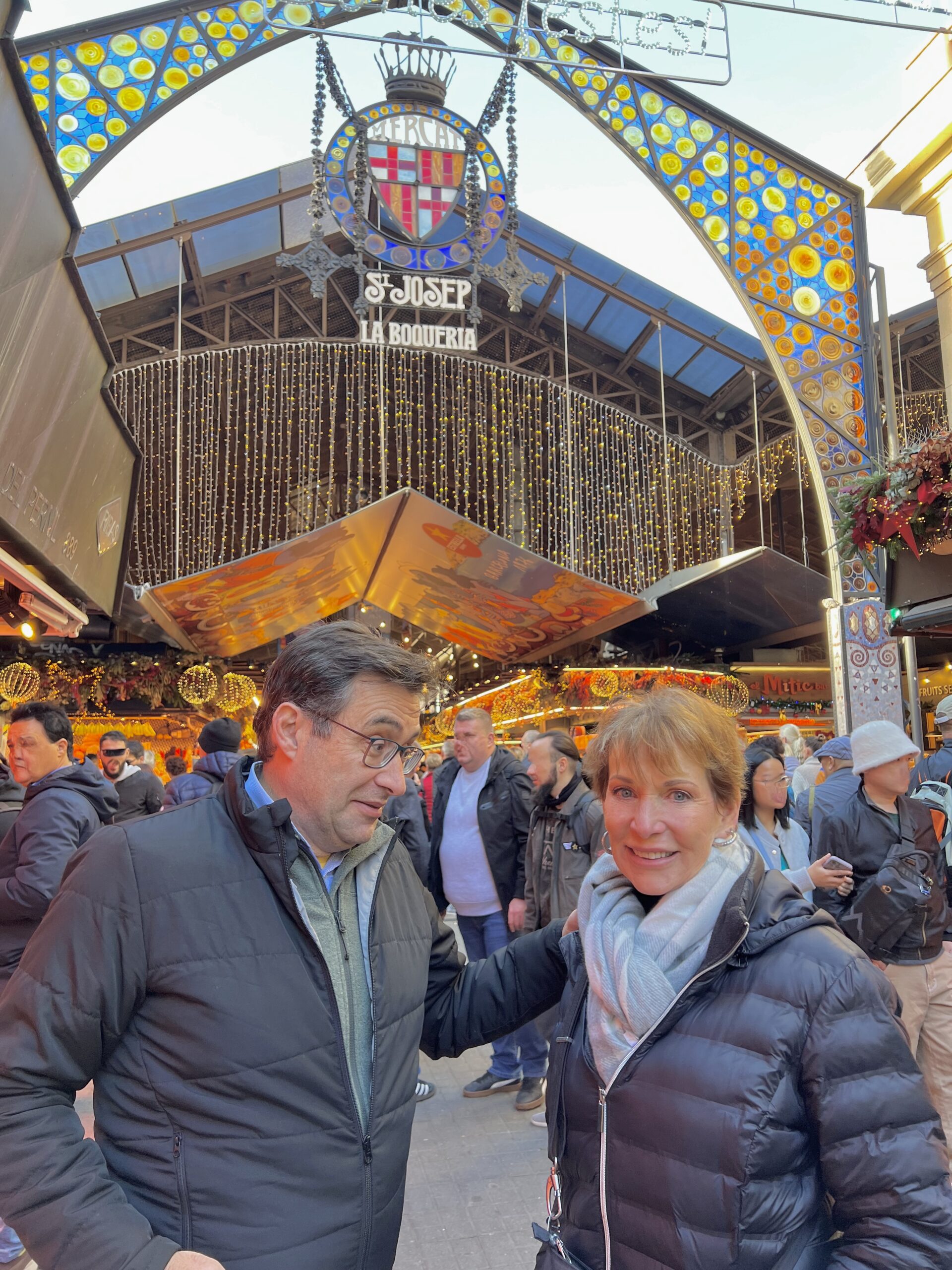









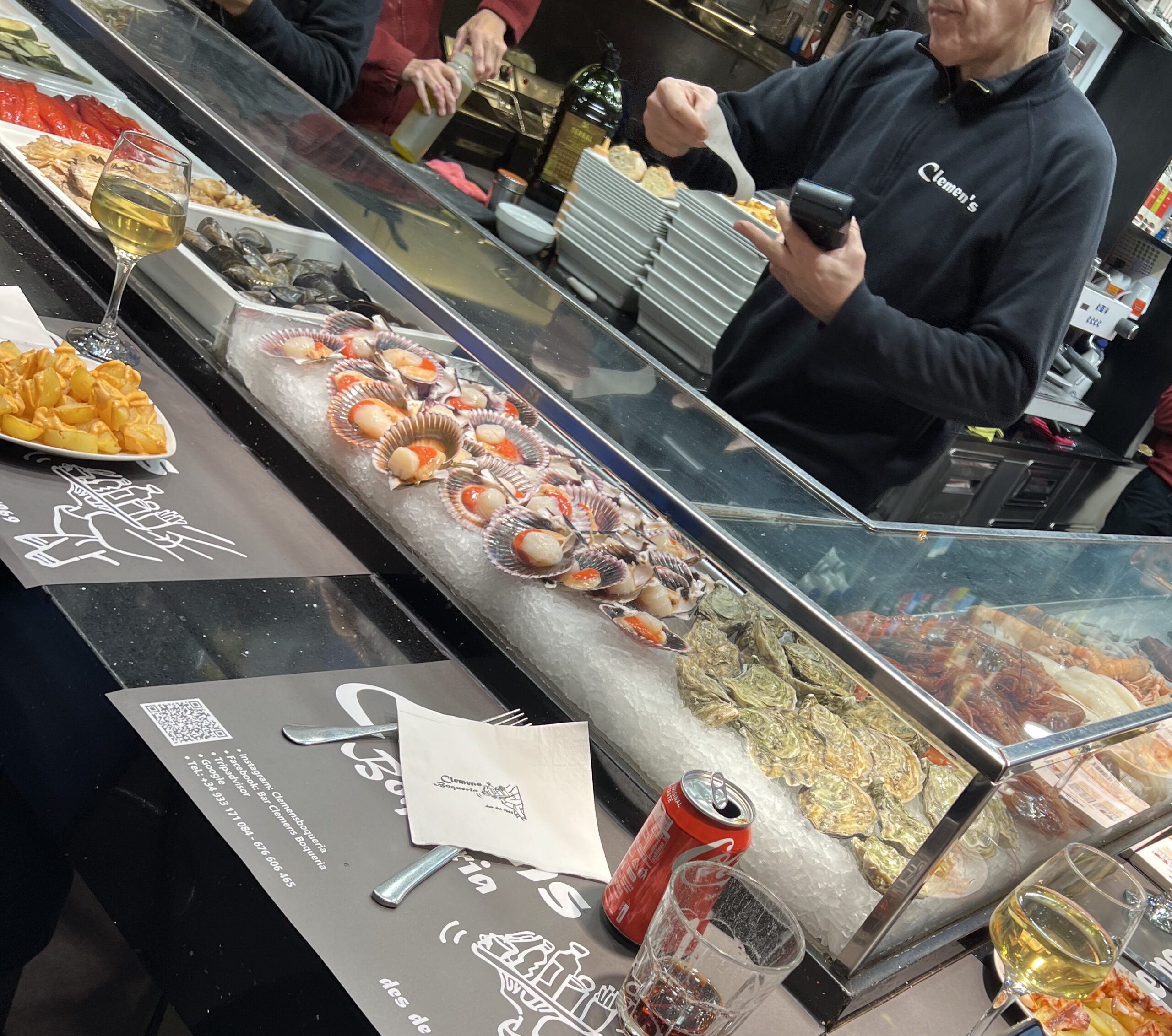

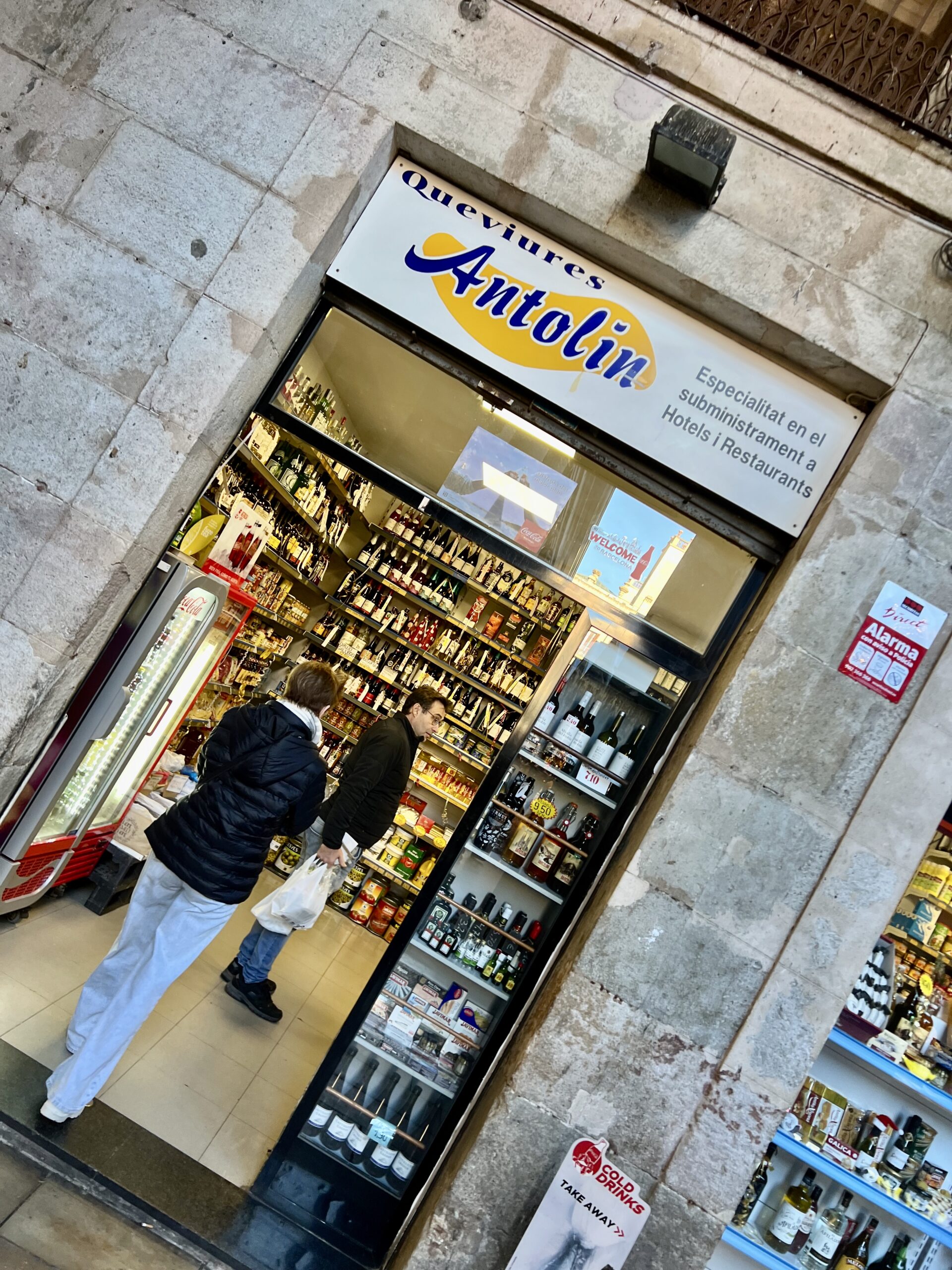




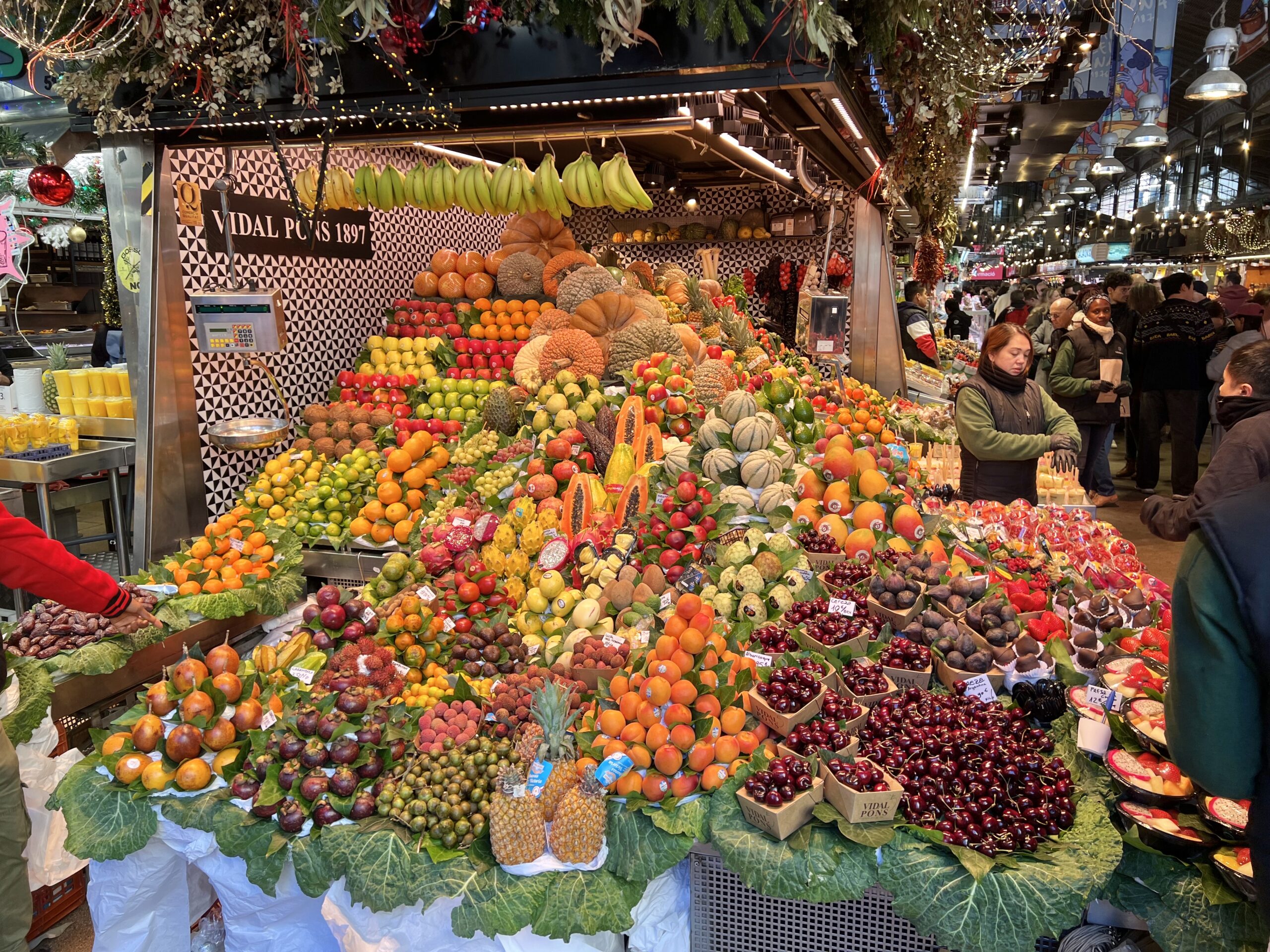
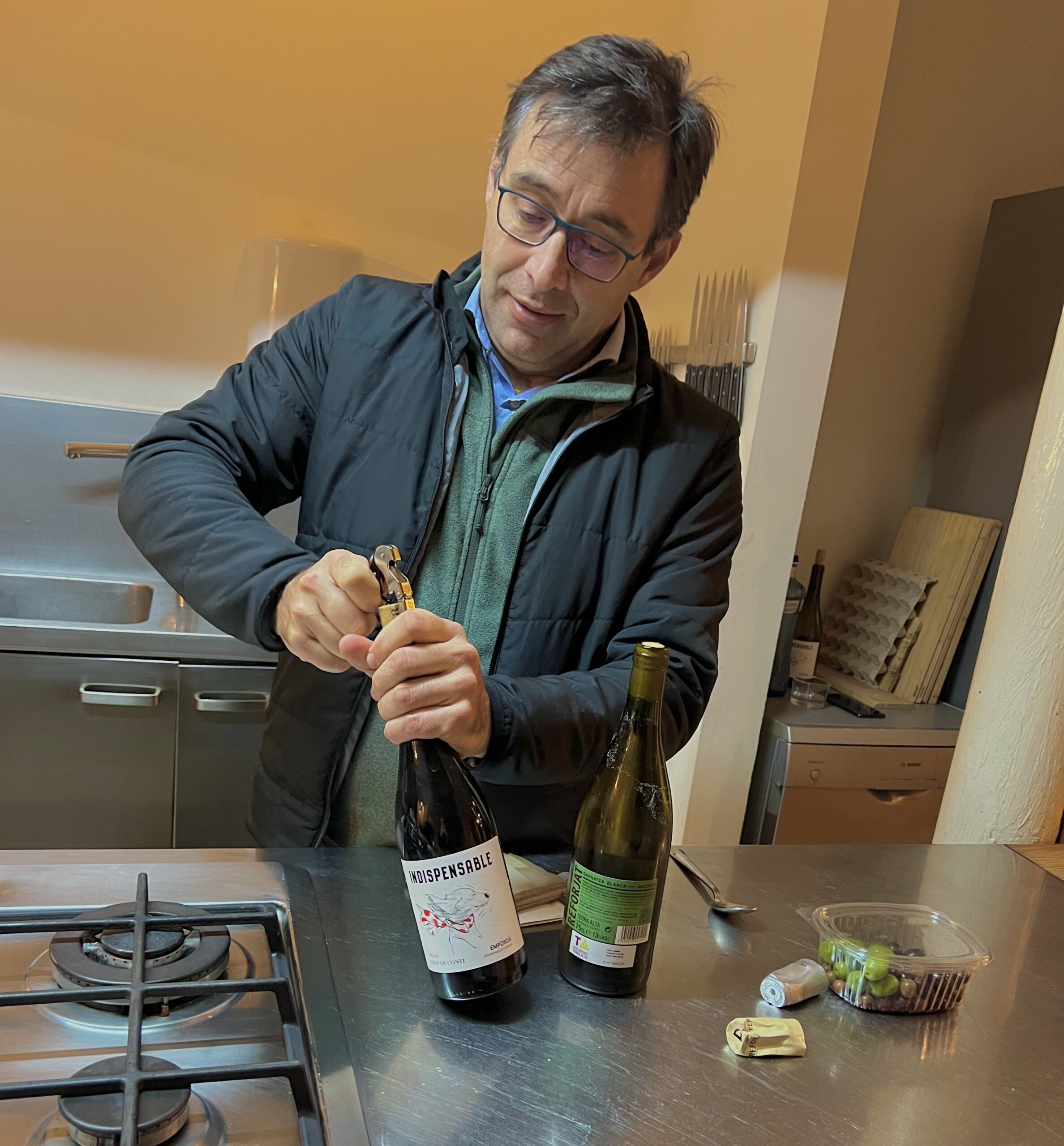
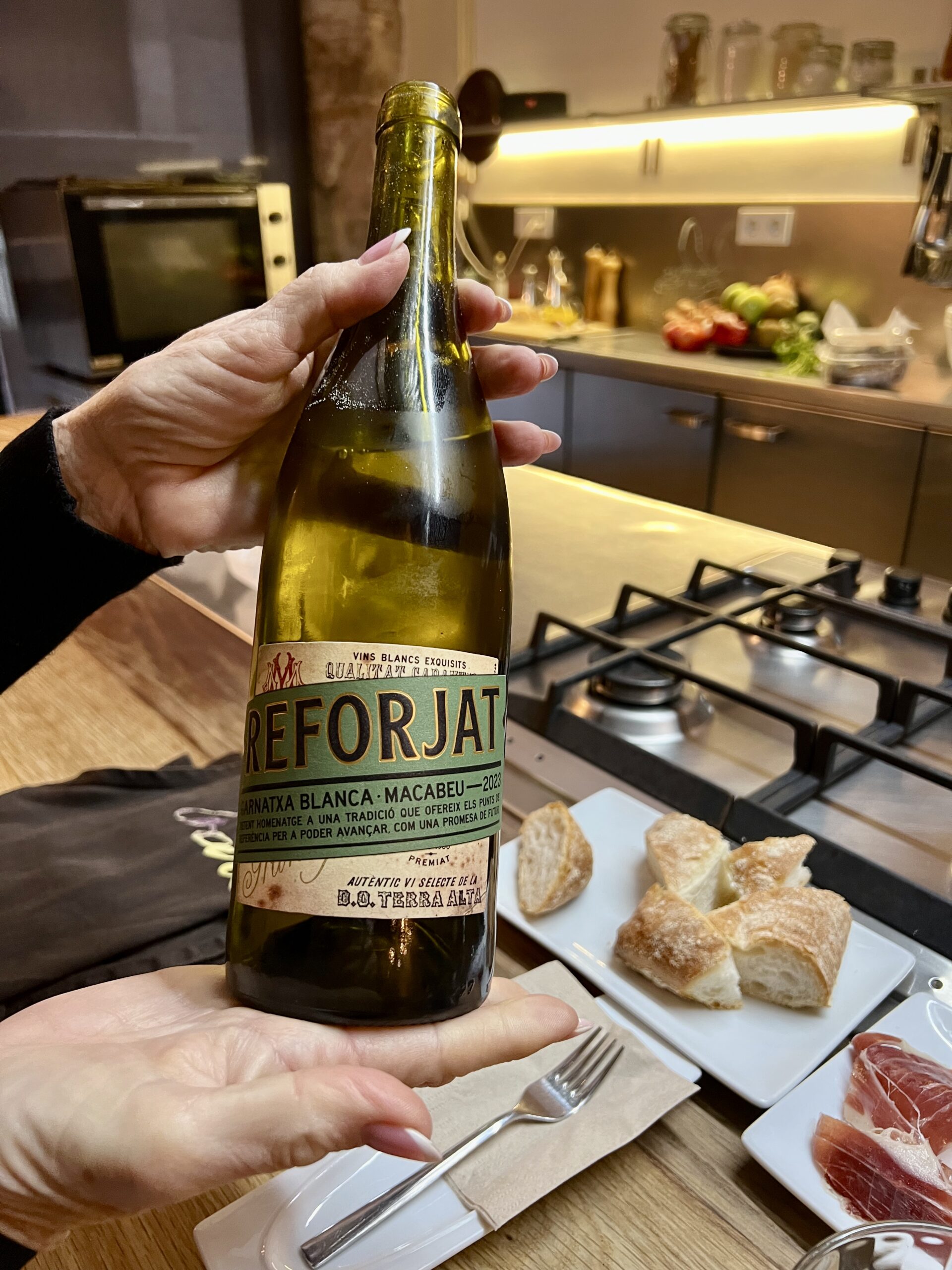
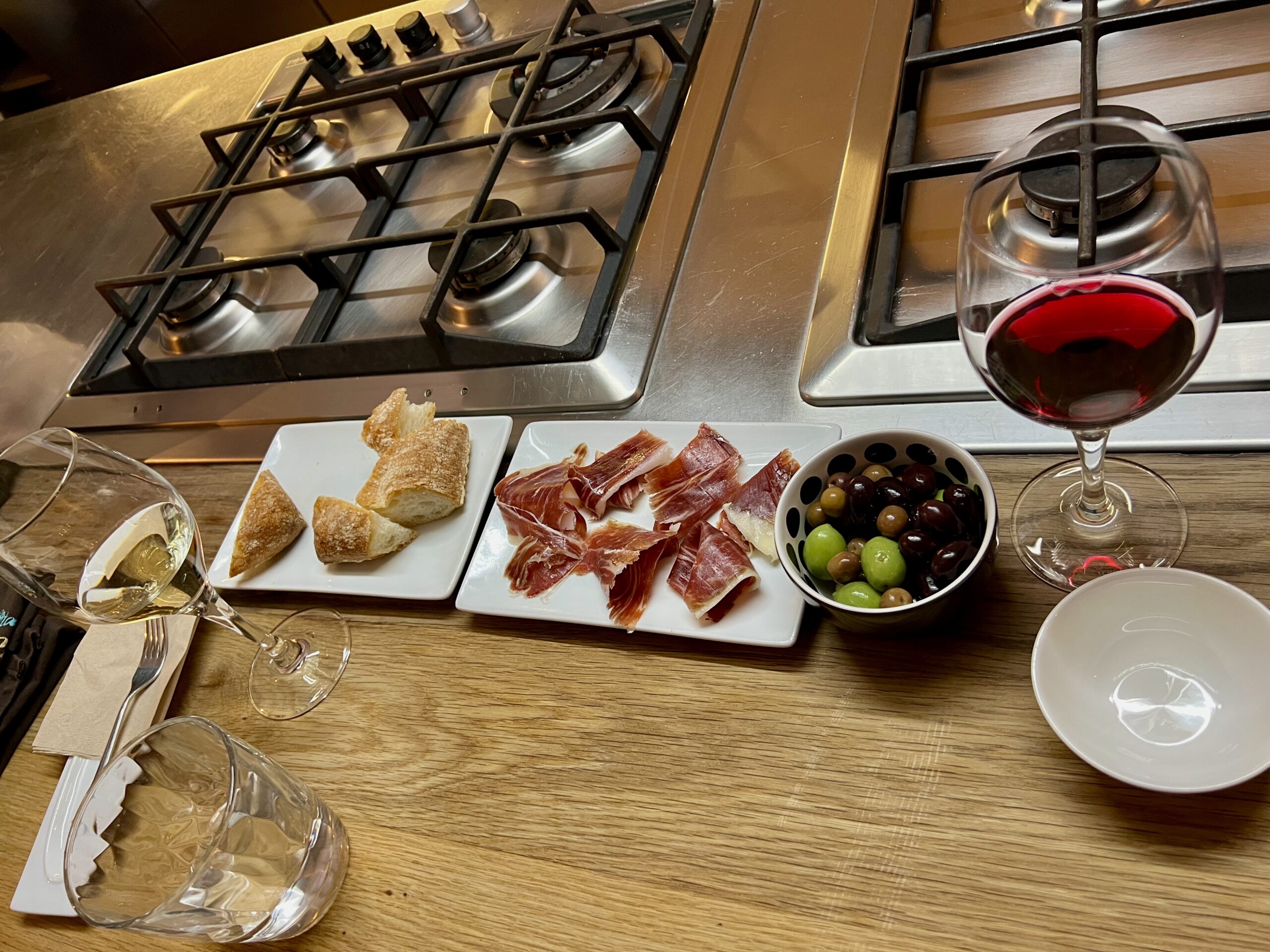

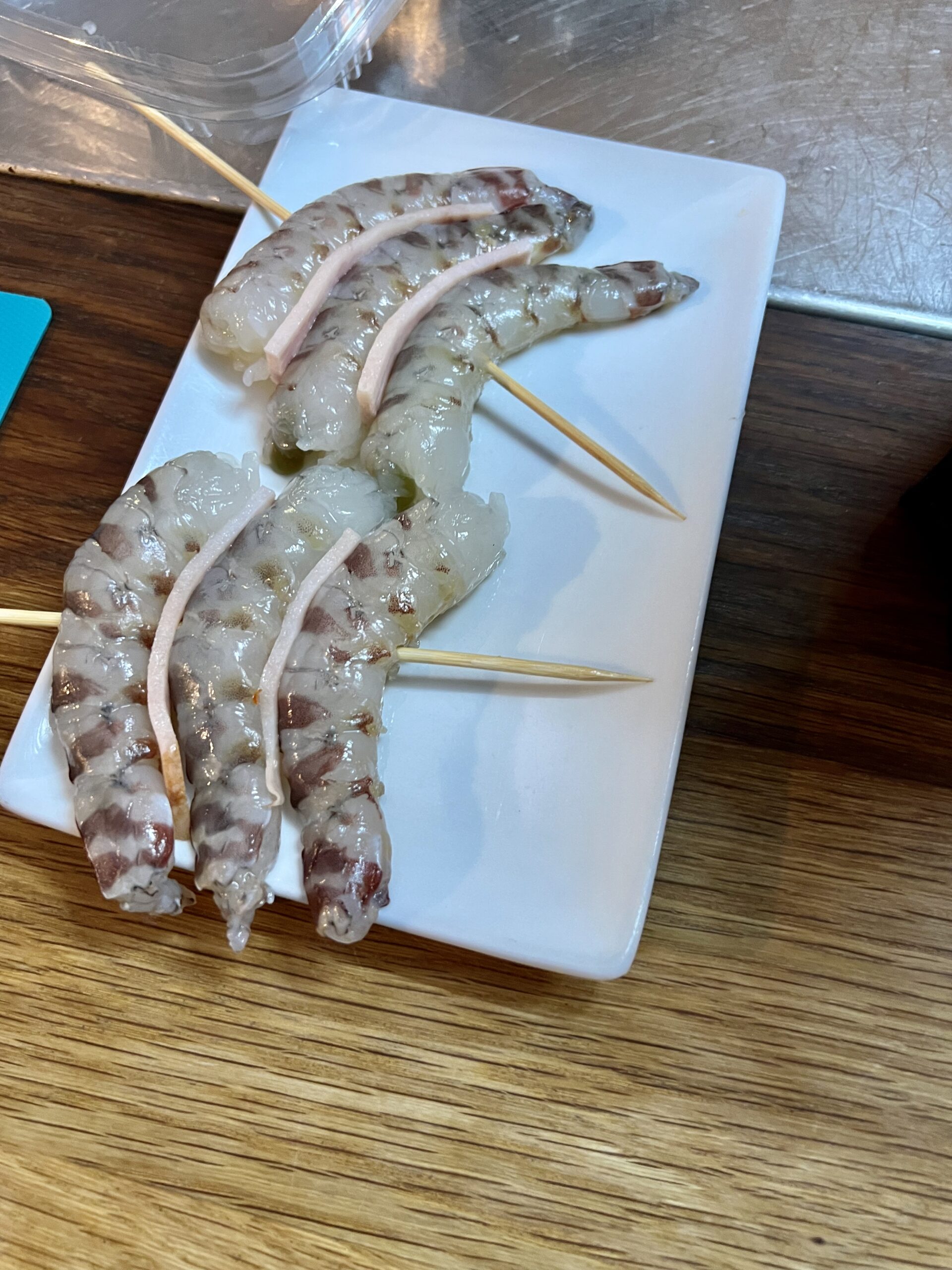

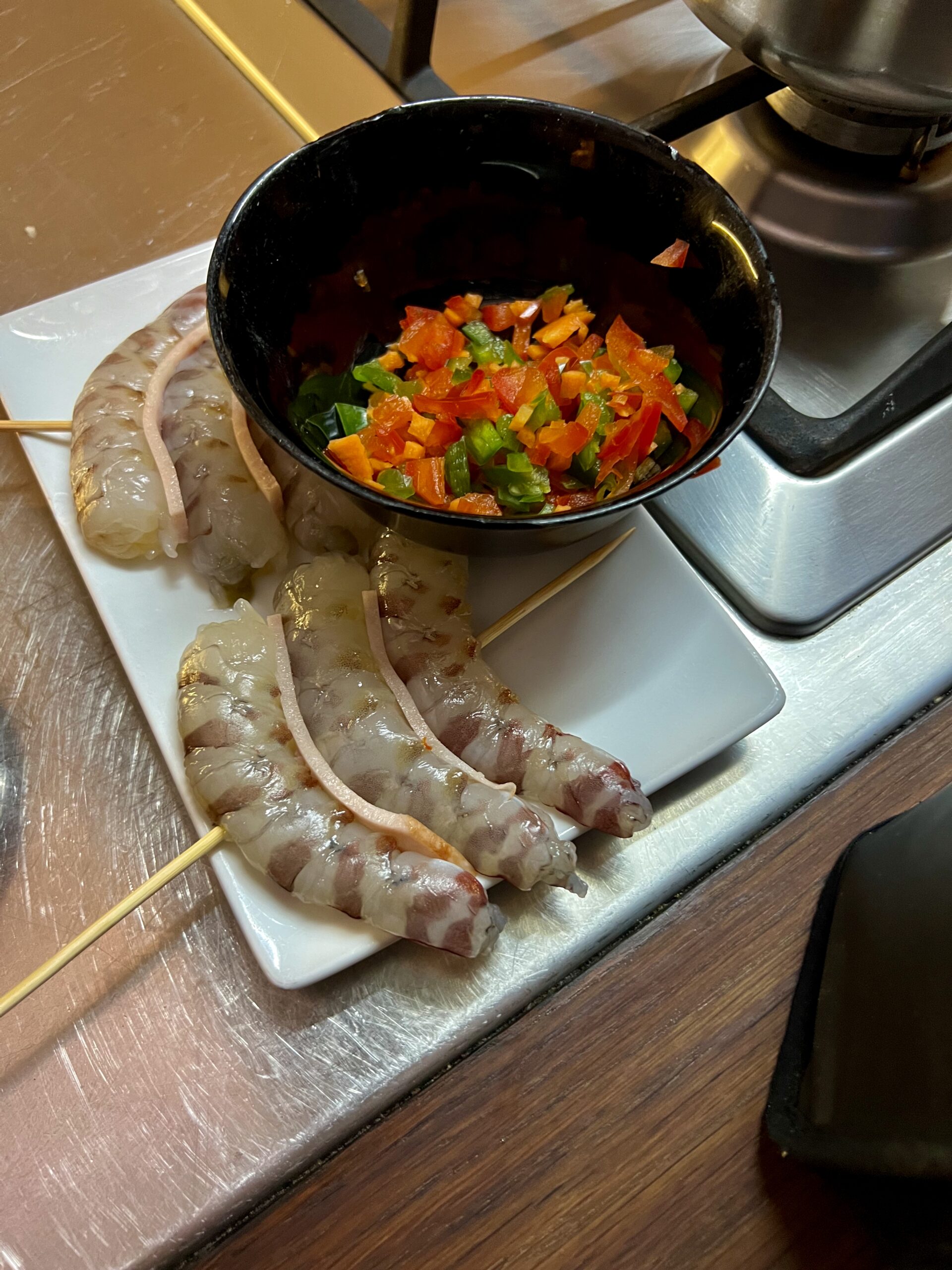



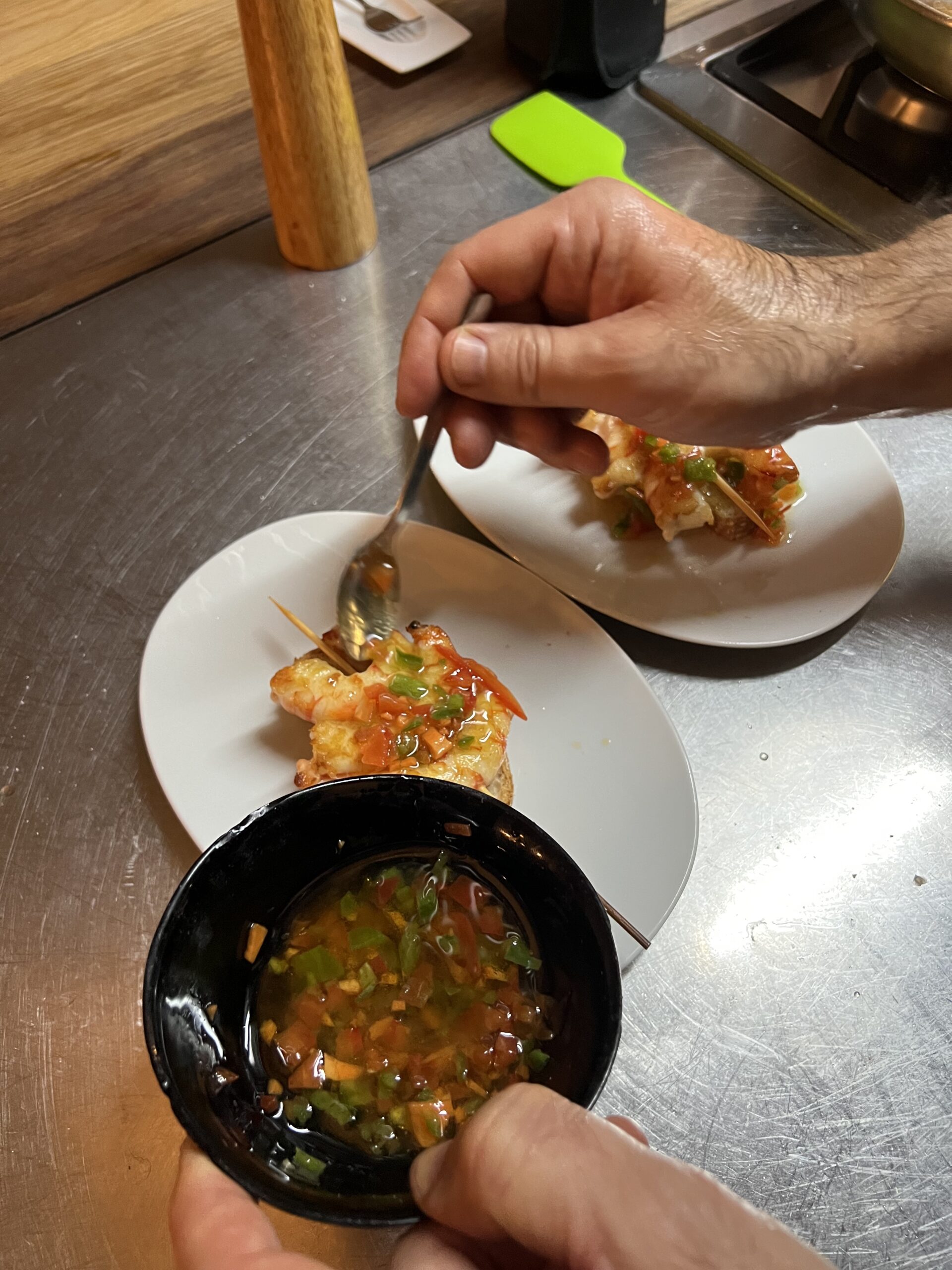

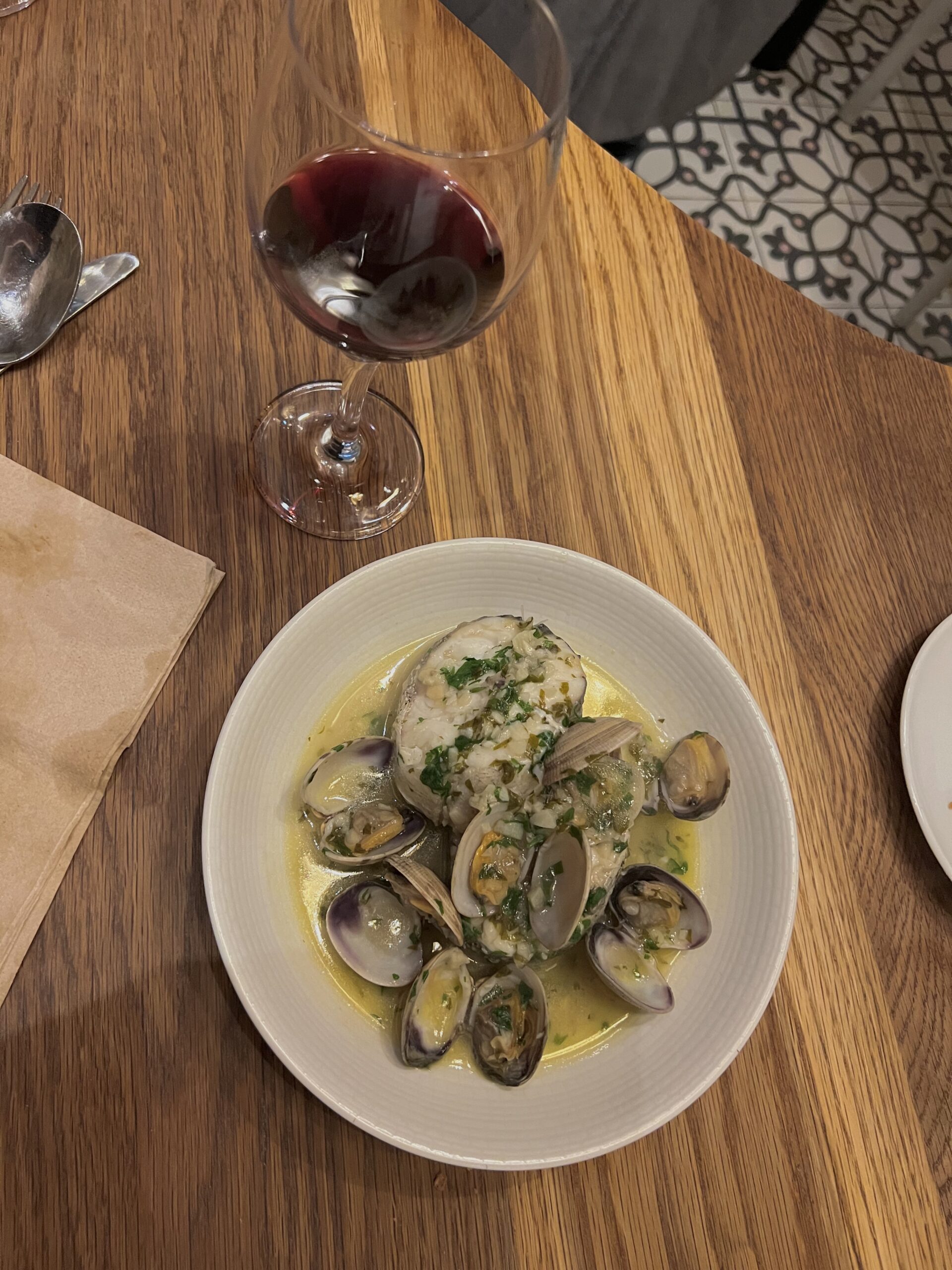

Leave a Reply